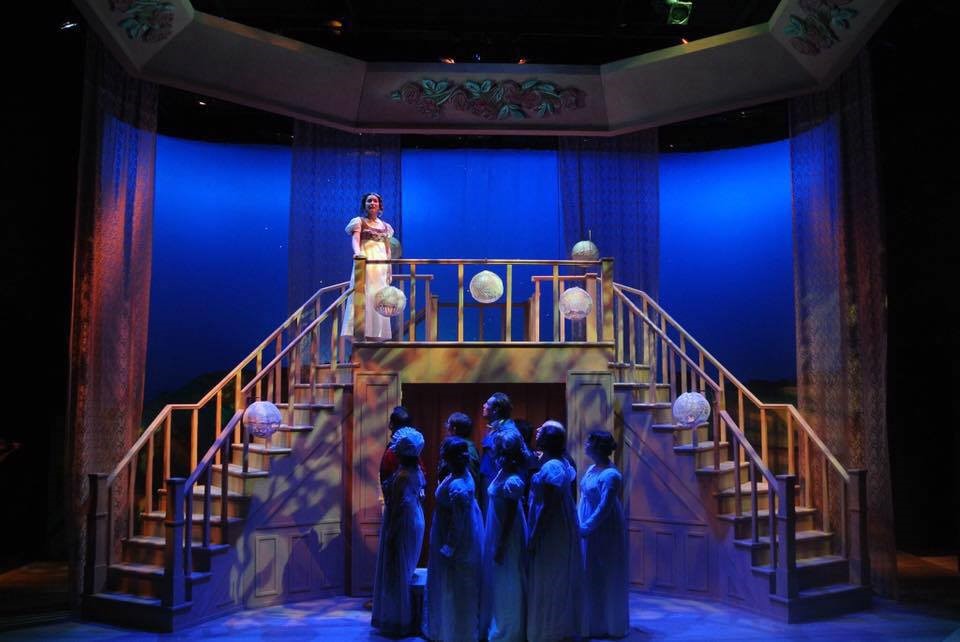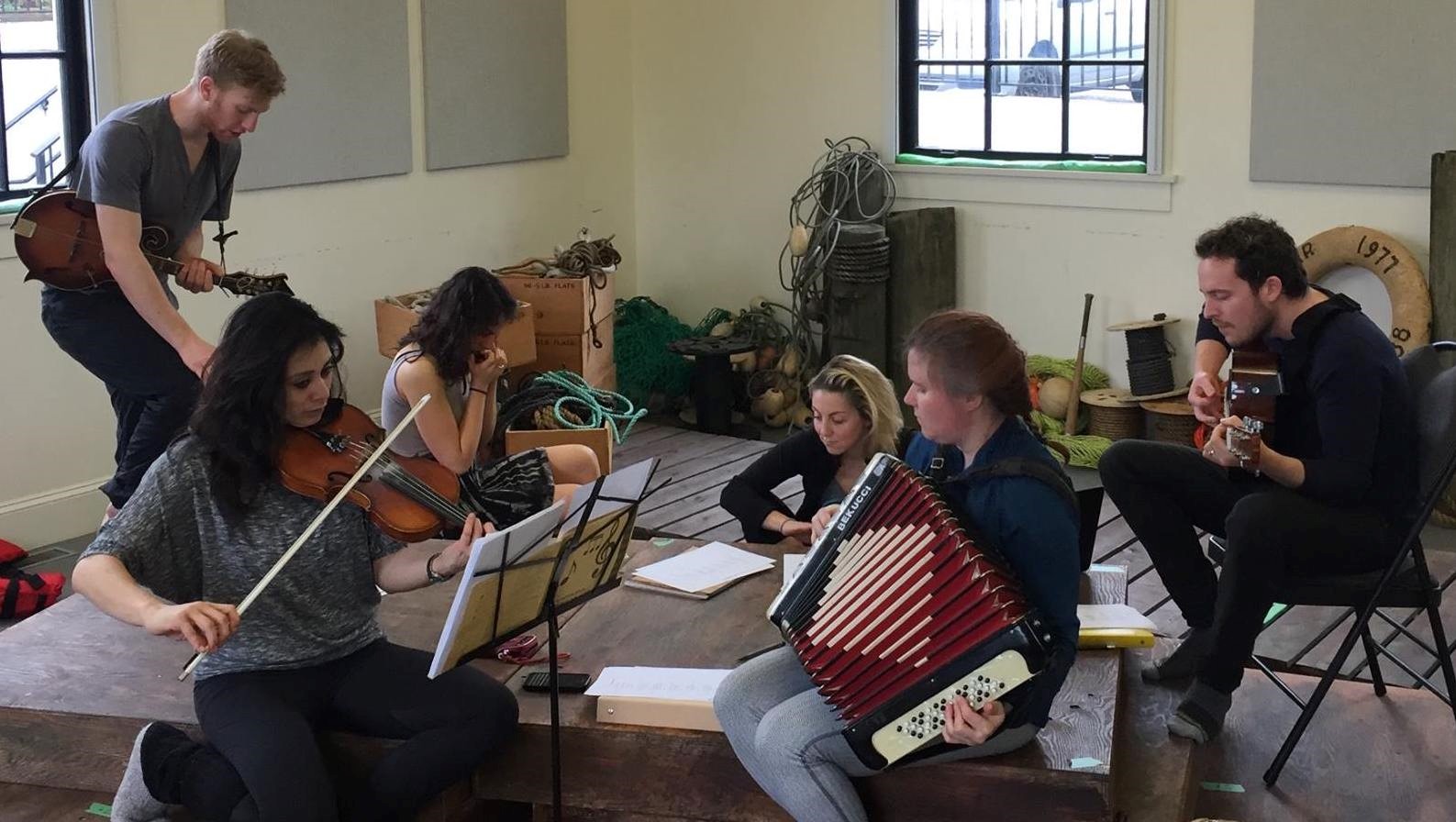-
Ask a Dramaturg: “What’s a Dramaturg?!”
By COC StaffPosted in COC Academy
The Canadian Opera Company recently welcomed a new addition to the COC Academy: seasoned theatre director, librettist, and instrumentalist Julie McIsaac is the company’s very first Director/Dramaturg-in-Residence.
Julie will have plenty of projects to keep her busy during this year-long residency, including work on the COC’s winter production of Hansel & Gretel, as well as the development of the Opera for Young Audiences production slated for the 2020/2021 season, alongside COC Composer-in-Residence Ian Cusson and librettist Colleen Murphy.
But while many people understand more common theatre roles, like director, writer or designer, not everyone is familiar with the term “dramaturg.” So we asked our new Director/Dramaturg-in-Residence to get to the bottom of this!
Read on for Julie’s take on the many important ways a dramaturg is involved in bringing a work to the stage.
First of all – is it “dramaturg” or “dramaturge”?
The term has German origins and, roughly translated, means “drama worker”. In North America and Europe, most have retained these roots by keeping the Germanic dramaturg spelling (with the hard “g” pronunciation), while companies across the United Kingdom often choose to soften the pronunciation by spelling it dramaturge. Both refer to the same role, which we’ll dive into below! A scene from Pride and Prejudice (Chemainus Theatre Festival, 2017), directed by Julie McIsaac
A scene from Pride and Prejudice (Chemainus Theatre Festival, 2017), directed by Julie McIsaac
What is the role of a dramaturg?
In my experience, each dramaturg is unique. One could define their role in relation to their own artistic philosophy, the particular demands of a project they’re working on, or the wants and needs of the people that they’re collaborating with.
Some questions that affect a dramaturg’s role in a production include:
Is the dramaturg supporting a composer-librettist team in the creation of a new piece?
If so, a dramaturg might be carefully documenting and archiving the process, tracking changes through different drafts of the libretto and score. They could be conducting research that helps situate the new work in relationship to—or in departure from—the existing canon, hosting conversations to help build effective methods of collaboration, or planning workshops and facilitating other activities that foster the development of the piece. For example, I typically ask myself "What can we do, ahead of the premiere, to ensure that the piece is being developed in relationship to its eventual audience?" Alongside all of this, the dramaturg liaises with producers and staff at the commissioning company, and generally helps information flow through all departments involved in the production, promotion, fundraising, and education initiatives surrounding the piece.
Are they working alongside a stage director to develop a new interpretation of an existing work?
In this scenario, a dramaturg might work to facilitate uncomfortable conversations around problematic themes or outdated modes of representation in a beloved, traditional opera. They might also conduct and share research that helps the creative team to tease out new (or forgotten) layers of meaning - either in the libretto or score - tied to the opera's original historical context. A dramaturg in this situation might also take a director's concept for a mental test drive, so to speak; the idea is to closely examine the text and music, in relationship to this new "take" on the material, to identify how it affects or reshapes the piece. All of this work happens in service of the new concept coming across as a powerfully meaningful, cohesive whole. That's the hope!
Are they supporting the public-facing departments of an opera company?
Here, a dramaturg might use their extensive knowledge of a text and its origins and context to help draft clear copy for season brochures, study guides, and program notes.
All of these are ways in which a dramaturg can contribute to the artistic and civic impact of an opera company. Something that matters deeply to me, personally, is that a dramaturg be there to help the creative team remain mindful and deliberate (and therefore accountable) in our storytelling on stage. The goal here is not to censor or dilute artistic expression but to ensure that we're always aware of what we're doing (and why we're doing it).
That being said, other practitioners might feel differently, or could have different priorities, depending on their surrounding community. It might seem like a bit of a tricky puzzle to piece together, but part of the beauty of dramaturgy is that there is fluidity built into the role.
Does this role only exist in the opera world?
No, it pervades other artistic disciplines, too. My first exposure to the craft came through theatre, first in high school, when I co-wrote a play with other students in my drama class, and then later in my formal theatre training, when I was mentored in playwriting. In both cases, there was sensitive, knowledgeable someone at the periphery of the process; witnessing, listening, and shaping activities that helped to crack open and reveal the work.
There's dramaturgy in non-text-based forms, as well. For example, there’s dramaturgy for dance, which I find fascinating! How do we create meaning through movement, and in our relationship to space?
One of the things I love about dramaturgy, specifically for opera, is that, given the number of elements in play at any given moment (text, music, choreography, history) there are so, so many potentially juicy pieces to shape. I need to constantly turn my head, my ear, and my gaze to consider the pieces in front of me. From the moment a person reads a season brochure to when they buy a ticket and see a production – everything they encounter along the way has the powerful potential to engage them with the art form in meaningful way. For a dramaturg, that knowledge is both daunting and delicious. A scene from Harvey (2016), which Julie McIsaac directed for Chemainus Theatre Festival
A scene from Harvey (2016), which Julie McIsaac directed for Chemainus Theatre Festival
Do dramaturgs only work on new works?
Nope! We're fortunate to have Katherine Syer as our dramaturg in this season's Hansel & Gretel, which is a familiar offering from the late-19th-century Western European repertoire. There are many ways a dramaturg can inform a production and the process.
When they're especially involved in creating the visual-spatial-physical means of telling the story, I see it as an exercise in design dramaturgy. When the dramaturg is helping to shape an interpretation of an existing canonical work – as Katherine is doing in this case, helping us to understand its original context, but also to share the work in a way that, hopefully, feels inclusive to contemporary Torontonians – I recognize it as production dramaturgy.
In addition to working with the lead artist(s) on a project, a dramaturg could also be liaising with all levels of staff at the producing company, as well as with audiences; it’s all meant to successfully prepare and tell the story in a way that boosts its impact on audiences.
Julie McIsaac (fourth from left) working with cast and musicians of The Out Vigil (New American Voices Festival, 2016)
How does someone become a dramaturg?
There isn't any one way to go about it, but something that's really shaped my perspective is my own experience with creative collaboration. I've written dramatic and musical works both on my own, and with other artists. I also staged many new works, often with the creators directly involved in the performance. Through all of this, I've come to learn that no two relationships are the same; every partnership and every piece has its own rhythm. Every project unearths different hopes and fears, and varying wants and needs.
What I try to bring into the process is clear communication, compassion, discernment, and humour. Given the number of unknowns, the pressures of opening night, the sheer risk of putting something new onstage – there's an inherent tension in the process. Being able to laugh – cultivating a space in which laughter is heard, and by virtue of this, keeps hearts and minds open – this means that we're much more likely to create something that will engage audiences, something that will be felt, and remembered. And this matters to me, deeply, because I know that having our voices heard, having a platform where we can share our stories, is a privilege.
See the impact of Julie’s work in Hansel & Gretel, on stage February 6 – 21.

Everyday magic comes alive in this new production, featuring spectacular visual effects and an accessible story for all ages.
Photo credits (top to bottom): Taylor Long; Cim MacDonald; John Webber; Melanie Thompson
